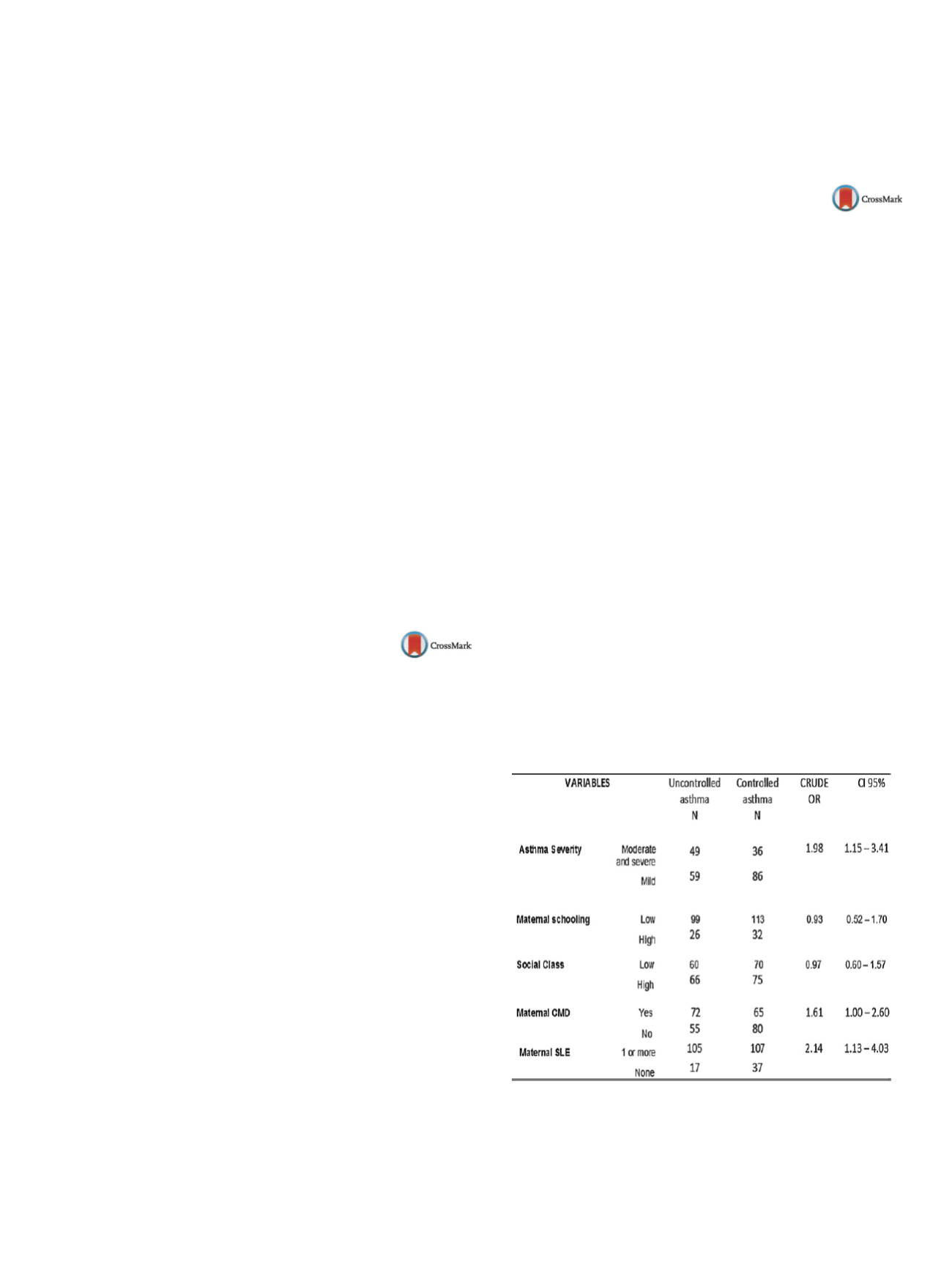

25th European Congress of Psychiatry / European Psychiatry 41S (2017) S645–S709
S695
Introduction
Aging is a very heterogeneous and dissimilar pro-
cess, full of asymmetries. There is evidence that socio-economic
differences determine disadvantages and inequalities in old ages.
Older people face particular inequalities in healthiness especially
with more complex and vulnerable long-term conditions, being
more likely to need support from social care services.
Aim
To evaluate the quality of life (well-being) related to the
health of the elderly according to socio-economic indicators.
Method
Cross-sectional quantitative study was performed. A
total of 316 elderly people (M= 74.78; SD = 9.78 years of age) was
interviewed with the Portuguese version of the EQ-5D-3L scale for
health-related quality of life.
Results
The interaction between income and the type of res-
idential follow-up (alone vs. accompanied) was not statistically
significant [F (2.310) = .910,
P <
.407; p
2
= .006]. Differences in
health status index were statistically significant for income [F
(2.310) = 5.518,
P <
.004; p
2
= .034]. Post-hoc comparisons indi-
cated that the mean score for those with insufficient income for
their expenses (M= .39, SD = .27) was significantly different from
those with income reaching their expenses (M= .50, SD = .25) as
well as those with income covering their expenses sufficiently
(M= .60, SD = .21). The main effect for the type of follow-up (alone
vs. accompanied) did not reach statistical significance [F (2.310)
= .224,
P <
.636, p
2
= .672].
Conclusions
Income has an impact on health-related quality of
life. Health in aging as a social phenomenon is not neutral to eco-
nomic differences and is exposed to these structural disadvantages.
Keywords
Quality of life; Well-being; Health; Aging
Disclosure of interest
The authors have not supplied their decla-
ration of competing interest.
http://dx.doi.org/10.1016/j.eurpsy.2017.01.1222EV0893
Alexithymia and coping strategies
among medical students
N. Messedi
∗
, I. Feki , B.N. Saguem , R. Masmoudi , J. Masmoudi
Hedi Chaker University Hospital, Psychiatry A, Sfax, Tunisia
∗
Corresponding author.
Introduction
University life is stressful for the student, which is
characterized by disturbed emotional regulation or alexithymia. To
face these stressful events he must use certain coping strategies.
Objectives
Studying the prevalence of alexithymia and explor-
ing coping strategies among medical students, and establish the
relationship between these parameters.
Methods
It was a cross-sectional study of 97 students in Sfax
university medicine (Tunisia). We used:
– a questionnaire containing demographic and clinical data;
– Toronto alexithymia Scale (TAS-20): a score
≥
61 indicates alex-
ithymia;
– WCC (Ways of Coping Checklist-r Folkman) with 3 factors:
problem-focused, emotion-focused and social support coping.
Results
The average age of participants was 24.07 years (
±
2.71);
the sex ratio (M/W) was 0.4. They were smoking in 36.1% and
sedentary in 43.3% of case. They had a nibbling activity in 57.7%.
The average score of TAS-20 was 50. 92 10.46 and alexithymia was
found in 16.5% of students. Alexithymiawas significantly correlated
with smoking (
P
= 0.003) and physical inactivity (
P
= 0.025). Most
students (72.2%) opted for problem-focused ways of coping with a
highest score at WCC = 29.21. A significant correlation was found
between alexithymia and coping strategy with emotion-focused
(
P
= 0.02). The TAS score was significantly higher among students
who resort to this ways of coping = 26.11. (
P
= 0.002).
Conclusion
This study explored the role of alexithymia in stress
management ubiquitous in university life. A high level of alex-
ithymia could be a detrimental factor in stress management.
Psychological support aimed specifically alexithymic dimension is
indispensable.
Disclosure of interest
The authors have not supplied their decla-
ration of competing interest.
http://dx.doi.org/10.1016/j.eurpsy.2017.01.1223EV0894
Association between child asthma
control and maternal mental health in
Alagoas, Brazil
C. Miranda
1 ,∗
, A .D. Costa
1 , L.M. Dos Santos
2 , J.A.P.M. Coelho
1 ,M.L. Medeiros
11
Federal University of Alagoas, School of Medicine, Maceio, Alagoas,
Brazil
2
Federal University of Bahia, Instituto de Humanidades Artes e
Ciências Professor Milton Santos, Salvador, Brazil
∗
Corresponding author.
Introduction
Maternalmental health is very important tomanage
children with chronic health problems.
Objective
To evaluate the role of maternal common mental dis-
orders (CMD) in the control of asthma in children by taking the
maternal stressful life events (SLE) into account.
Aims
To improve the management of childhood asthma by using
a psychosocial approach.
Methods
Cross-sectional study involvingmother-asthmatic child
dyads assisted in paediatric pulmonology outpatient clinics.
To characterize maternal CMD, the Self-report questionnaire
(SRQ–20) with cut-off 7/8was used. The global initiative for asthma
control (GINA) questionnaire was used to define controlled and
uncontrolled patients. The SLE questionnaire was also used.
Results
Table 1suggests association between uncontrolled
asthma with asthma severity and SLE, and a borderline association
between uncontrolled asthma andmaternal CMD.
Table 2 indicates
that, considering all independent variables simultaneously, asthma
severity is the only variable statistically significant. It is also pos-
sible that with a larger sample size, maternal CMD and SLE would
also become statistically significant.
Conclusions
The frequency of uncontrolled asthma is associated
with asthma severity and tended to be higher in children whose
mothers had CMD and were exposed to SLE.
Table 1
Crude odd ratios (OR) for the association between asthma
control in children, and selected variables (
n
= 272).


















